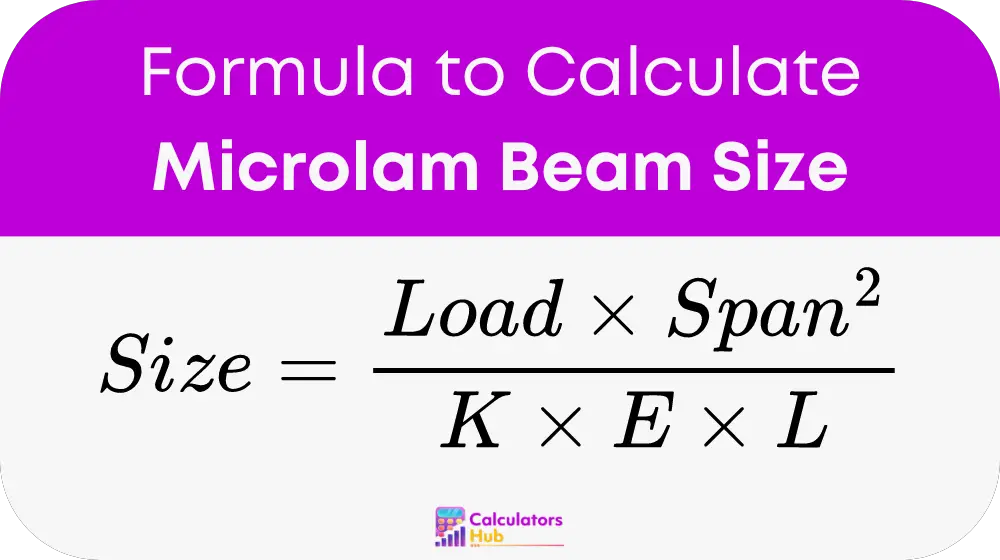The Microlam Beam Size Calculator is designed to help engineers and builders determine the appropriate size of a microlam beam needed for a particular application. By inputting specific values such as load, span, material properties, and support conditions, users can quickly calculate the required beam size to ensure structural integrity.
Formula of Microlam Beam Size Calculator
The Microlam Beam Size Calculator uses the following formula to determine the beam size:

Where:
- Load: The total load applied to the beam (in pounds or Newtons).
- Span: The distance the beam needs to span (in feet or meters).
- K: A constant that depends on the type of load and support conditions.
- E: The modulus of elasticity of the beam material (in pounds per square inch or Pascals).
- I: The moment of inertia of the beam cross-section (in inches to the fourth power or meters to the fourth power).
General Terms Table
Here is a table with some common terms and pre-calculated values to help users quickly reference typical scenarios without recalculating each time.
| Load (lbs) | Span (ft) | K | E (psi) | I (in^4) | Size (ft) |
|---|---|---|---|---|---|
| 5000 | 10 | 1.2 | 1,800,000 | 150 | 0.0019 |
| 6000 | 12 | 1.2 | 1,800,000 | 200 | 0.002 |
| 7000 | 15 | 1.2 | 1,800,000 | 250 | 0.0023 |
Example of Microlam Beam Size Calculator
Let's consider an example to illustrate the use of the Microlam Beam Size Calculator.
Given:
- Load: 5000 pounds
- Span: 12 feet
- K: 1.2 (for specific load and support conditions)
- E: 1,800,000 psi (modulus of elasticity of microlam)
- I: 200 in^4 (moment of inertia of the beam cross-section)
Calculation:
Size = (5000 x 12^2) / (1.2 x 1,800,000 x 200)
Size = 720000 / 432000000 ≈ 0.00167 feet
FAQs
A1: The modulus of elasticity (E) measures the stiffness of a material. It is crucial in beam calculations because it determines how much the beam will deform under load. A higher modulus of elasticity means the material is stiffer and will deform less.
A2: The constant (K) depends on the type of load and support conditions. Refer to engineering tables or guidelines specific to your project's parameters to find the correct value for K.
A3: Yes, you can use the calculator for different materials as long as you input the correct modulus of elasticity (E) and moment of inertia (I) values for the material in question.